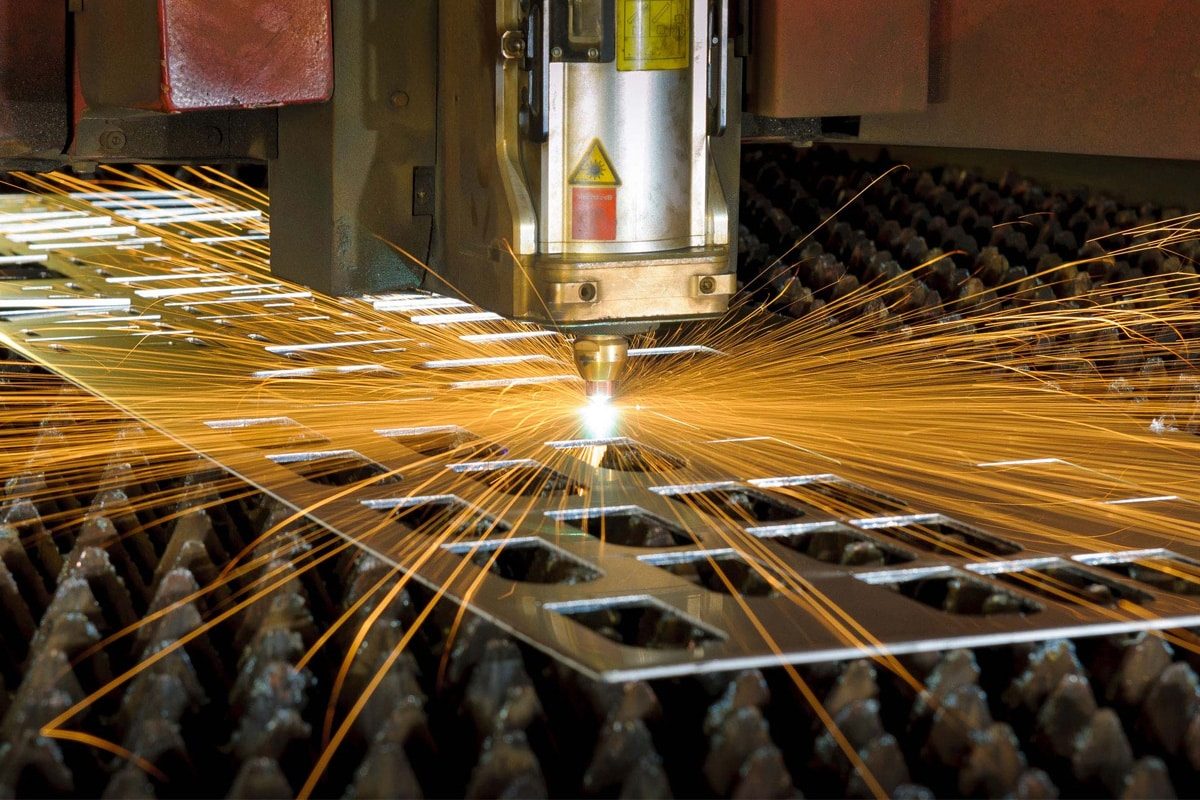
레이저 절단은 얼마나 효과적인가?
Laser cutting is a non-contact, high-precision processing method that uses a high-energy-density laser beam to act on the surface of a material, heats the material to partially melt, vaporize or burn it, and uses an auxiliary gas to blow away the slag, thereby achieving non-contact, high-precision material cutting. Compared with traditional mechanical cutting, laser cutting has the characteristics of high positioning accuracy, narrow kerf, small heat-affected zone, smooth edges, and automated processing. It is especially suitable for cutting parts with complex contours and high-precision requirements. Against the backdrop of the global manufacturing industry continuing to develop in the direction of high precision, small batch, and customization, the demand for equipment such as “fiber laser cutting machines”, “CO2 laser cutting machines”, and “Nd: YAG laser cutting machines” has increased significantly.
목차
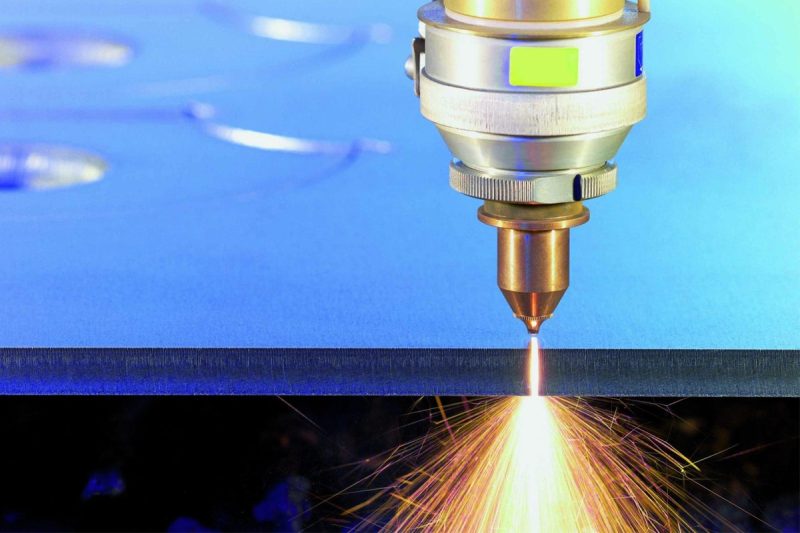
Laser cutting principle
Laser generation and beam transmission
Laser source type: Common laser cutting light sources include CO2 laser generators, fiber laser generators, and solid laser generators (such as Nd: YAG). Among them, 섬유 레이저 절단기 have advantages in high power, high beam quality, and high electro-optical conversion efficiency; CO2 레이저 절단기 still occupy an important position in some non-metal and thick plate metal cutting fields; Nd: YAG laser generators are more common in precision cutting and special material processing scenarios.
Beam transmission: CO2 lasers are usually transmitted to the cutting head through a reflector system, while fiber lasers are transmitted through optical fibers, with low transmission loss, compact structure, and easy maintenance. After the beam passes through the focusing lens, a tiny spot is formed at the focus with extremely high energy density. When it acts on the surface of the material, it is quickly heated and melted or vaporized.
Energy focusing and control: The size of the focused spot diameter, the focus position (positive focus, negative focus, under the lens, etc.), and the distance between the cutting head and the workpiece affect the cutting quality. Modern 레이저 절단기 are usually equipped with automatic tracking or automatic focusing functions to improve the “precision laser cutting” effect and “laser cutting efficiency”.
Material interaction and cutting process
Material heating and melting/vaporization: When the laser beam is irradiated on the surface of the material, the photon energy is absorbed by the material and converted into heat energy, causing it to quickly heat up to the melting point or even the vaporization temperature in the focal area. For metals, if a combustion-supporting gas (such as oxygen) is used, the energy released by the oxidation reaction can be used to accelerate cutting; for stainless steel or aluminum alloys, inert gases (such as nitrogen) are often used to avoid oxidation affecting the quality of the cutting edge.
Auxiliary gas function: Oxygen can increase the cutting speed, but may cause oxidation of the cut seam, which is suitable for carbon steel, etc.; nitrogen or argon is suitable for high-quality stainless steel cutting, and can obtain smoother edges without oxidation browning; air-assisted cutting has low cost but may be limited in some precision occasions. The selection of different gases needs to be optimized in combination with the “laser cutting metal” category, plate thickness, and “edge quality” requirements.
Cutting speed and quality balance: Too fast cutting speed may result in incomplete cutting of the cut seam or rough edges; too slow speed may cause excessive heat-affected zone (HAZ), burrs or scorching. It is necessary to set the best cutting plan through experiments or a parameter library based on parameters such as “material type and thickness”, “laser power”, “focusing position”, and “auxiliary gas” to achieve a balance between “precision laser cutting” and “efficient laser cutting”.
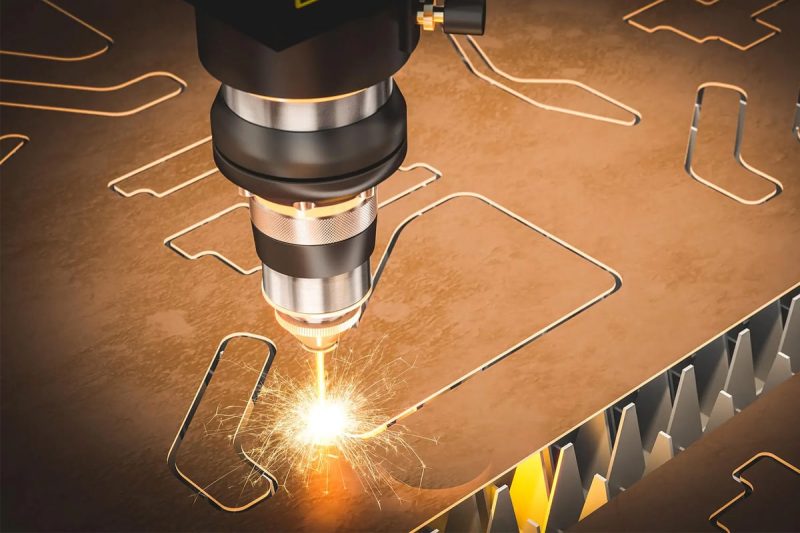
Laser cutting types
The following three laser cutting technologies are widely used in industrial manufacturing, each with its own advantages and applicable scenarios. This article analyzes its principles and characteristics in depth, and makes a comparative summary at the end.
CO2 레이저 절단
The CO2 laser generator uses carbon dioxide gas as a laser medium, emits infrared light with a wavelength of about 10.6µm, and cuts or engraves the material after focusing.
Principles and characteristics
- Principle: The laser beam acts on the surface of the material to heat and melt it, and uses auxiliary gas (such as oxygen) to blow away the slag to complete the cutting.
- Low absorption of metal: Due to the long wavelength, the absorption efficiency of metal to this wavelength is lower than that of fiber laser.
- Good at non-metal: Excellent in cutting non-metal materials such as 목재, 아크릴, leather, cloth, 플라스틱, 등.
- Suitable for thick plate metal: High-power CO2 laser generators (2-4kW and above) can efficiently cut metal plates with a thickness of tens of millimeters.
- Cutting effect: narrow slit, small heat-affected zone, and high cutting efficiency.
- Disadvantages: low photoelectric conversion efficiency (about 10-15%), high energy consumption, complex maintenance (optical lenses, water cooling system, etc.), relatively high equipment cost and operating costs.
섬유 레이저 절단
Fiber laser cutting uses rare-earth element-doped optical fiber as the gain medium. The laser is guided by the optical fiber and efficiently focused on the surface of the workpiece for cutting.
Principles and characteristics
- Short wavelength and high absorption: about 1.06µm wavelength is efficiently absorbed by metal, and the electro-optical conversion efficiency is as high as 30-50%.
- Fast cutting speed: cutting medium and thin sheet metal is 2-5 times faster than CO2 laser generators of the same power.
- Easy maintenance: all-fiber structure, no complex lens adjustment required; long life and stable use.
- Precision and quality: excellent beam quality, narrow slit, minimal thermal impact, suitable for high-precision processing.
- Wide application: commonly used in 스테인레스 스틸, 탄소강, galvanized sheet, 알류미늄, and other metal types, has become the mainstream technology in the metal processing market.
Nd: YAG laser cutting (solid-state laser)
Nd: YAG (yttrium aluminum garnet) laser generator is a common solid-state laser generator, which also operates at a wavelength of 1.06µm and can achieve continuous or pulsed output.
Principles and characteristics
- Pulse cutting capability: suitable for precision cutting of micro-holes, detail processing, and highly reflective materials (such as copper, silver, etc.).
- Low output power: Compared with a fiber laser, it has lower power and is suitable for thin plates or micro-processing applications.
- Versatility: Nd: YAG can be used for cutting, welding, marking, etc., with high application flexibility.
- Complex maintenance: Using flash lamp or diode pumping, the maintenance requirements are higher than fiber laser.
- Application scenarios: mostly used in precision manufacturing, aerospace, medical equipment, special industries, and field or on-site processing environments.
The three laser cutting methods have their characteristics: CO2 laser cutting focuses on non-metals through a 10.6μm wavelength, with moderate cost and smooth cutting, but relatively low efficiency and energy efficiency; fiber laser cutting uses the 1.06μm band, with high absorption rate and high electro-optical conversion efficiency (about 30-50%), with the advantages of fast, high precision and low maintenance, especially suitable for batch processing of medium and thin metal plates, and is now the mainstream in the market; Nd: YAG laser cutting mainly outputs 1.06μm pulses, suitable for highly reflective materials (such as copper and silver) as well as micro-holes and precision small processing, but the power is low, the maintenance is complex, and the speed is slow. In general, if non-metal processing is required, CO2 can be selected; if high-efficiency and high-precision metal cutting is pursued, fiber laser is the preferred choice; and for micro-processing needs of highly reflective materials, Nd: YAG can be used.
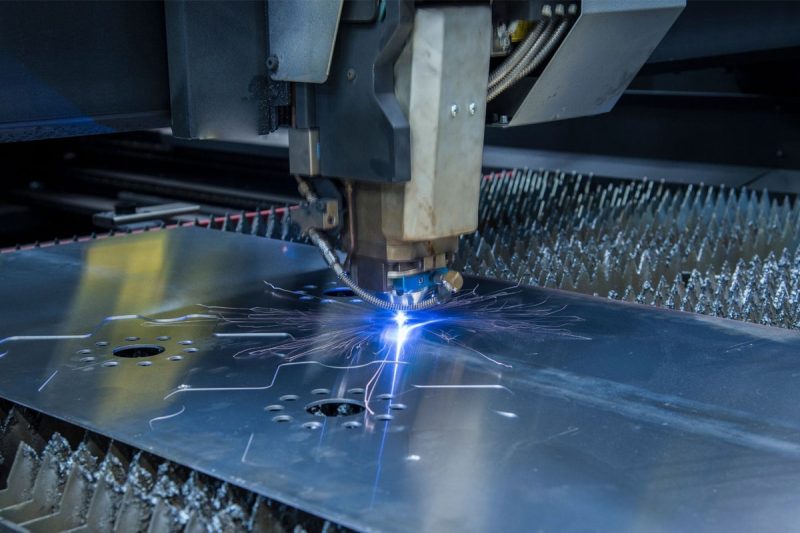
Factors affecting the laser cutting effect
In the actual application of laser cutting, advanced equipment alone cannot ensure cutting quality. There are many factors affecting the final effect, including material type and thickness, laser type and power, cutting speed and quality control, auxiliary gas selection, and other links. Each factor is interrelated with other parameters, so comprehensive optimization is required to achieve the goal of narrow slit, small heat-affected zone, smooth edge and efficient cutting.
재료 유형 및 두께
- Metal materials: carbon steel, stainless steel, aluminum alloy, galvanized sheet, copper, titanium alloy, etc., each has a different absorption rate and heat conduction characteristics for laser wavelength, and power and speed need to be adjusted.
- Non-metal materials, such as acrylic, plexiglass, wood, cloth, etc., are mostly cut with a CO2 laser, but be careful of material burning and harmful smoke.
- Material thickness: Thin plates (<6mm) can use lower power fiber laser machines with narrow slits and fast speeds; medium and thick plates (6-20mm) can choose medium and high power fiber or CO2 laser; ultra-thick plates (>20mm) often require high power laser or combined processes.
Laser type and power
- Power selection: Usually choose the appropriate power according to the material thickness and type, such as 1kW, 2kW, 3kW, and above; the higher the power, the greater the maximum cutting thickness, but the cost and energy consumption will also increase.
- Laser type: The aforementioned CO2, fiber, and Nd: YAG each have their applicable scenarios. It is necessary to select the best cost-effective solution through parameter comparison and customer demand analysis.
절단 속도 및 품질
- Speed adjustment: The optimal cutting speed needs to be determined through trial cutting or an empirical parameter library; the cutting speed affects the cut finish and heat-affected zone.
- Edge quality: Edge smoothness, chamfering, oxidation color, burrs, etc. are all related to speed, focus position and auxiliary gas selection.
보조 가스
- Oxygen: Increase cutting speed, suitable for carbon steel, but the cut seam may be oxidized.
- Nitrogen/argon: Ensure high-quality cutting edges, suitable for stainless steel, aluminum alloy, etc.; the cost is relatively high.
- Air: Convenient and economical, but may affect the precision machining effect.
The key factors that affect the effect of laser cutting can be summarized as follows:
- Material type and thickness directly determine the absorption rate, heat conduction, and required power. Metals need to adjust the energy accordingly; non-metals such as acrylics use CO2 lasers and need to prevent burns and smoke problems.
- Laser type and power need to be reasonably selected according to material thickness and properties (such as 1kW-3kW). The higher the power, the greater the cutting thickness, but the cost and energy consumption increase at the same time.
- Cutting speed and quality control require the support of test parameter library; too fast speed can easily lead to incomplete cutting, and too slow speed will expand the heat affected zone, form burrs or oxidation.
- The type and pressure of auxiliary gas (oxygen, nitrogen, air) determine the slag blowing efficiency, the degree of oxidation of the cut, and the edge quality; proper adjustment of gas and pressure can achieve both speed and quality.
Through precise adjustment and coordinated optimization of the above factors, you can significantly improve the final effect of laser cutting and achieve the processing goals of high efficiency, high precision, and low cost.

레이저 절단의 장점
Laser cutting technology is rapidly replacing traditional cutting methods due to its high precision, high efficiency, and multifunctional characteristics, and has become one of the core processes in modern manufacturing. From micron-level slits to complex automated assembly lines, laser cutting not only improves processing quality, but also greatly improves production efficiency. The following content analyzes its core advantages in depth, aiming to help readers fully understand the value of laser cutting.
- High precision and accuracy: Laser cutting can achieve extremely narrow slits (usually <0.2mm) and high positioning accuracy (up to 0.01mm level) through high-quality beam focusing, which is suitable for precision parts cutting and complex contour processing.
- Speed and efficiency: Compared with traditional mechanical cutting, laser cutting is faster, especially in the processing of thin and medium plates. At the same time, it can be combined with automated equipment to achieve batch and efficient processing.
- Versatility: Applicable to a variety of materials (metal and non-metal) and a variety of thicknesses; different processes can be completed by simply changing the laser source type or adjusting parameters, which is flexible.
- Minimum material waste: By precisely controlling the laser path and slit width, material surplus and waste can be minimized, material utilization can be improved, and costs can be reduced.
- High repeatability: Laser cutting under CNC control ensures the consistency of mass-produced parts, reduces manual errors, and improves product quality stability.
- Clean and smooth edges: Under appropriate parameters, the slits do not require secondary deburring, saving subsequent processing steps. This is especially evident in scenes that require a high finish, such as stainless steel.
- Non-contact process: The laser does not directly contact the workpiece, and there is no mechanical stress deformation, which is especially suitable for thin plates and precision parts; there is no need to replace the tool, reducing maintenance costs.
- Automation and flexibility: It can be seamlessly connected with the automatic loading and unloading system and CAD/CAM software to achieve intelligent production; it can adapt to the customization needs of small batches and multiple varieties.
The advantages of laser cutting can be summarized as follows: First, high precision and accuracy enable it to achieve a slit of less than 0.2mm and a positioning accuracy of 0.01mm, providing guarantee for complex contour processing; second, fast processing speed, especially in the field of medium and thin plates, can achieve efficient batch production with the automation system; in addition, laser cutting is suitable for a variety of materials and thicknesses, and flexible cutting tasks can be completed without frequent equipment replacement; less material waste, narrow slit technology allows high material utilization; strong repeatability ensures consistent size of batch parts; smooth edge cuts can reduce or eliminate secondary processing; non-contact process avoids mechanical stress and tool wear; at the same time, it is easy to combine with CAD/CAM and automatic loading and unloading systems, and has highly automated and flexible characteristics. Overall, laser cutting has obvious advantages in multiple dimensions such as precision, efficiency, cost, and automation, and is an ideal choice for modern industrial production.
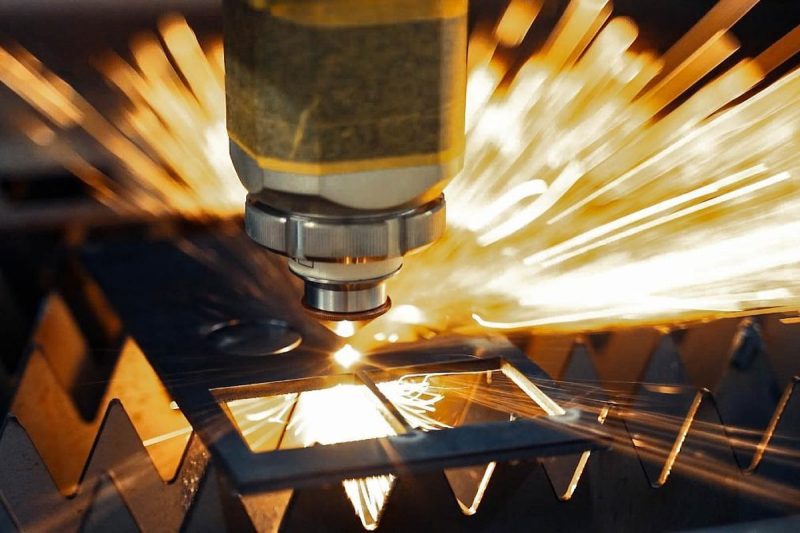
레이저 절단의 단점
Although laser cutting has significant advantages, it also faces a series of challenges in practical applications. The initial equipment and operating costs brought by high-power equipment, the high reflectivity or difficulty in cutting of certain materials (such as copper and aluminum), the heat-affected zone (HAZ) during cutting that may affect material properties, high power consumption, and the maintenance requirements of the light source, optical path and auxiliary systems are all key factors that must be fully evaluated during project planning and equipment selection.
- High initial cost: The investment in laser cutting equipment (especially high-power fiber laser cutting machines and automated production lines) is relatively large, but in the long run, efficiency and quality improvements can dilute the cost.
- Material restrictions: Cutting certain highly reflective materials (such as copper and aluminum) or extremely thick materials requires special processes or higher power; cutting non-metallic flammable materials requires fire safety measures.
- Heat-affected zone (HAZ): Although the heat-affected zone of laser cutting is smaller than that of traditional cutting, in some high-precision or high-performance scenarios, attention should still be paid to changes in material organization or deformation caused by heat effects.
- Power consumption: High-power laser cutting machines have high energy consumption and need to match sufficient cooling capacity and energy supply; operating costs need to be evaluated.
- Maintenance requirements: Laser sources, optical path systems, cutting heads, exhaust and cooling systems, etc., require regular maintenance; especially the optical fibers and optical components in fiber laser generator need to be dust-proof and leak-proof.
Although laser cutting performs well in terms of precision and efficiency, users need to pay attention to the following key limitations before investing: First, the equipment investment is large and the maintenance cost is high, which puts economic pressure on small and medium-sized enterprises; second, some highly reflective or ultra-thick materials require special processes and higher power, and may still face cutting difficulties; third, even if the heat-affected zone of laser cutting is relatively small, in scenarios with extremely high requirements for material properties (such as hardness and toughness), special attention should still be paid to HAZ control; in addition, continuous high energy consumption brings large operating costs and cooling requirements; finally, it is highly dependent on maintenance management: laser sources, optical systems, cooling and exhaust, etc. all need regular maintenance and calibration to ensure cutting quality and equipment life.
Overall, to give full play to the advantages of laser cutting, the key lies in the full process management from equipment selection, material matching, parameter optimization, to the establishment of a maintenance system, so as to achieve the best balance between cost and effect.

Application of laser cutting
Laser cutting technology plays a key role in many industries with its extremely high processing accuracy, flexible material adaptability, and high automation characteristics. For example, in the automotive manufacturing industry, laser cutting is used for batch cutting of precision parts such as dashboards, chassis components, exhaust systems, etc., helping manufacturers to achieve efficient production of complex structures; in the aerospace field, laser cutting has become a reliable means of cutting lightweight materials such as titanium alloys and aluminum alloys, which is particularly suitable for the needs of lightweight parts and high tolerance control; and in the electronics industry, laser cutting can achieve millimeter-level or even micron-level precision processing of circuit boards, heat sinks and tiny connectors, which is an indispensable part of PCB manufacturing and semiconductor preparation.
With the increasing demand for medical equipment and surgical instrument processing, laser cutting is often used to make precision parts such as scalpels, stents, and implants with its non-contact processing method and burr-free advantages. In the field of signage and advertising display, especially the production of acrylic and metal signs, laser shearing can show sharp cutting edges and complex patterns to meet customized visual needs. In jewelry making, high-precision precious metal cutting ensures the quality of finished jewelry with complex patterns and smooth edges.
In addition, the textile and clothing industry also widely uses lasers to achieve burr-free cutting of fabrics, leather, and textiles, especially for lace, belts, and custom patterns. In furniture manufacturing and interior design, laser cutting technology is used for fine processing of wood, composite boards, and decorative panels, helping to create furniture and decorative pieces with complex structures or unique styles. In addition, laser cutting also demonstrates its multifunctional advantages in architectural models, educational prototyping, mold manufacturing, advertising crafts, and other fields.
Overall, laser cutting has become an important tool in the field of modern manufacturing and creative design with its high speed, extreme precision, non-contact, and material compatibility, and has continuously promoted various industries to a new level in efficiency improvement and quality control.
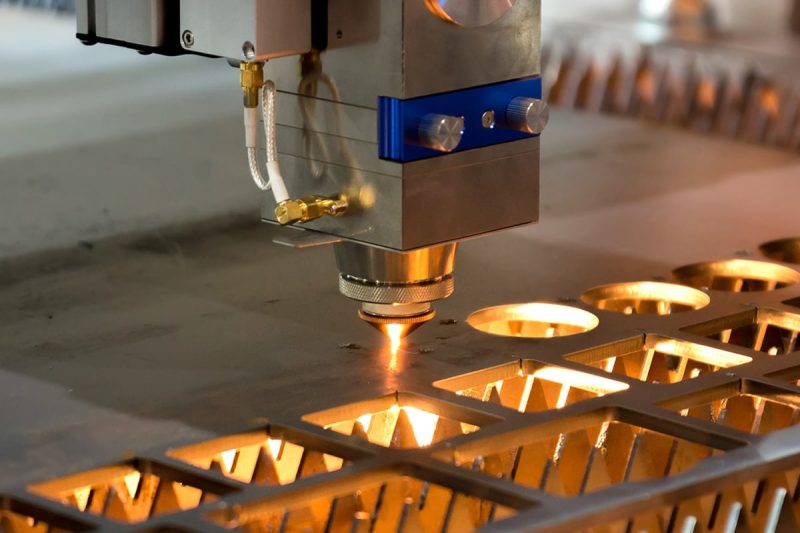
요약
Laser cutting technology plays an important role in all walks of life with its high precision, high efficiency, multi-functionality, and automation characteristics. From CO2 laser cutting machine to fiber laser cutting machine, to special application scenarios such as Nd: YAG, various laser sources and cutting processes need to be flexibly selected according to material type, thickness, quality requirement, and cost budget. The key factors affecting the cutting effect include material properties, laser type and power, cutting speed, auxiliary gas, and optical path control.

레이저 솔루션을 얻으세요
As a company with many years of experience in laser equipment research and development and production, AccTek 레이저 has mature technology and rich experience in the fields of fiber laser cutting machines, CO2 laser cutting machines, etc. Our equipment performs well in high-precision laser cutting, high-power fiber laser cutting thick plate, precision stainless steel cutting, automated laser cutting production line, etc., and can provide customized solutions according to customer needs. Whether you are concerned about laser cutting efficiency or cutting-edge finish, we can provide optimized parameter support and technical services.
Welcome to visit our website or 연락하다 the AccTek Laser team directly to get professional selection suggestions, equipment quotations, and after-sales guarantees. Let us work together to improve your product quality and production efficiency with leading laser cutting technology and create outstanding performance together.
연락처 정보
- [email protected]
- [email protected]
- +86-19963414011
- No. 3 Zone A, Lunzhen Industrial Zone, Yucheng City, Shandong Province.
레이저 솔루션 받기
